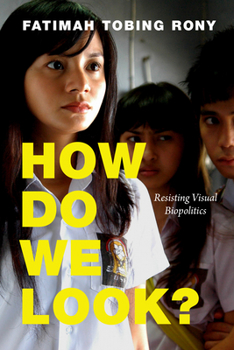How Do We Look?: Resisting Visual Biopolitics
(Part of the a Camera Obscura book Series)
Select Format
Select Condition 
Book Overview
In How Do We Look? Fatimah Tobing Rony draws on transnational images of Indonesian women as a way to theorize what she calls visual biopolitics--the ways visual representation determines which lives are made to matter more than others. Rony outlines the mechanisms of visual biopolitics by examining Paul Gauguin's 1893 portrait of Annah la Javanaise--a trafficked thirteen-year-old girl found wandering the streets of Paris--as well as U.S. ethnographic and documentary films. In each instance, the figure of the Indonesian woman is inextricably tied to discourses of primitivism, savagery, colonialism, exoticism, and genocide. Rony also focuses on acts of resistance to visual biopolitics in Indonesian film, writing, and photography. These works, such as Rachmi Diyah Larasati's The Dance that Makes You Vanish, Vincent Monnikendam's Mother Dao (1995) and the collaborative films of Indonesian filmmaker Nia Dinata, challenge the naturalized methods of seeing that justify exploitation, dehumanization, and early death of people of color. By theorizing the mechanisms of visual biopolitics, Rony elucidates both its violence and its vulnerability.
Format:Hardcover
Language:English
ISBN:1478013672
ISBN13:9781478013679
Release Date:January 2022
Publisher:Duke University Press
Length:248 Pages
Weight:1.25 lbs.
Dimensions:0.8" x 6.3" x 9.2"
Customer Reviews
0 rating





